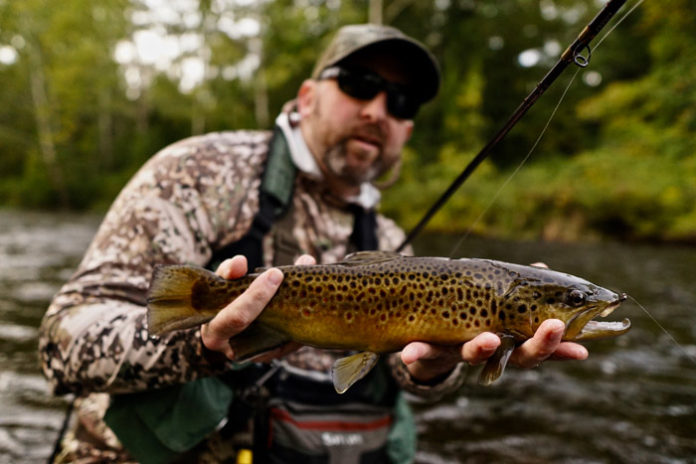Written by: George Daniel
Just because you can’t see the fish refusing your nymph doesn’t mean they aren’t there.
Photo by George Daniel
While watching Horton Hears a Who with my kid, I was reminded of the difference in tactical approach between a nympher blindly fishing a run and a dry-fly angler targeting a rising fish. In the latter situation, the angler can see a target, but the former is simply anticipating that a fish is there. I feel this difference of actually seeing a trout rising versus hoping a fish is near may determine how much effort an angler puts in their presentation.
There’s a great quote from the movie that mirrors my attitude when blindly nymphing a run. Jane Kangaroo exchanges words with Horton, who thinks he hears a Who, but Jane can’t see or hear what Horton is speaking of. The quote goes something like “If you can’t see, hear, or feel something, it doesn’t exist.” This made me think about the difference in tempo in which some anglers blindly nymph a run versus targeting a rising fish with dry fly.
There’s some sort of focus button that turns on when an angler sees a rising trout, especially one that consistently rises. When an angler fails to fool that fish, they’ll switch patterns or tactics. They know the fish is there and understand that, if they want to catch it, they’ll need to change tactics or flies. I’ve spent over an hour targeting a single rising trout.
But there are few nymph anglers who put in the same effort (i.e. staying in one place, exhausting all presentation possibilities) when nymphing a run. After fishing a good looking run without a strike, I often hear myself or clients saying , “Huh, I can’t believe there’s not a fish there.” We assume we’re doing everything correct, so we need to move to another location to find a fish. Chances are, however, that there were fish there; we just failed to do the right things required to catch them.
This is why I’ve been changing my nymphing psychology over the years. I can’t assume I’m doing everything correctly when I fail to hook up in spot I know holds fish. Instead, I need to assume there’s a fish feeding on the bottom (just as the same fish would be fishing on the surface) and make changes to my presentation. I can add weight, decrease weight, change the angle I cast my nymph, change patterns, or maybe change my position. Approach high-probability areas the same way you would if you saw a steady surface feeder: Assume you’re getting a subsurface refusal and begin to change tactics . Again, this applies to spots you know hold fish all day and year round.
Your nymphing success will surely increase if you employ the same patience you would when targeting a riser. Just remember not to lose confidence in a high-probability area when blind-fishing doesn’t produce. You know there’s a feeding fish there, so assume something is wrong with your current approach and make the change. In short, don’t be a Jane Kangaroo.
George Daniel operates Livin On The Fly, a guide service in State College, Pennsylvania. He is also the author of Strip-Set: Fly-Fishing Techniques, Tactics, & Patterns for Streamers, as well as Dynamic Nymphing.
Credit: Source link































